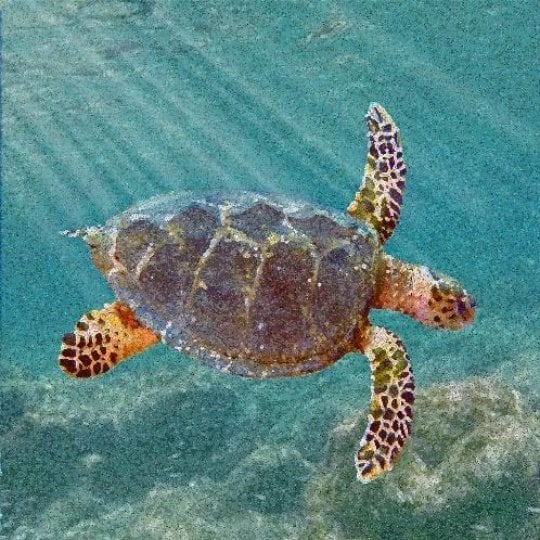Marine life is truly diverse, with so many species to be discovered and secrets to be uncovered. Sea turtles are no exception. Recently, scientists discovered an ancestor of modern sea turtles in Alabama. The newly discovered ancestor is a new species belonging to the Late Cretaceous epoch, as scientists noted in their study published in the open-source journal PLOS ONE, by Drew Gentry from the University of Alabama at Birmingham, Alabama, USA, and other colleagues.
During previous studies that scientists conducted on sea turtles, they always believed that the ancestor of modern sea turtles was a single ancestor belonging to the Peritresius clade during the Late Cretaceous epoch. This era is believed to have lasted between 100 and 66 million years ago. The ancestor, scientifically known as Peritresius ornatus, lived only in North America.
The scientists found fossils belonging to the species in the southwestern part of the U.S. This area is also known for hosting a lot of Late Cretaceous marine turtle fossils. For this particular study, scientists searched and analyzed the sea turtle fossils obtained from marine sediments in Alabama and Mississippi, known to date roughly between 83 and 66 million years ago. The sequencing revealed that the fossils also represent a new species or new ancestor of modern sea turtles.
“Late Cretaceous members of Peritresius belong to a diverse clade of marine adapted turtles currently thought to be some of the earliest representatives of the lineage leading to modern hard-shelled sea turtles (Pan-Cheloniidae),” researchers wrote in their study. “Prior studies have suggested that Peritresius was monospecific, with a distribution restricted to Maastrichtian deposits in North America. However, new Peritresius specimens identified from Alabama and Mississippi, USA, show that the genus contains two taxa, Peritresius ornatus, and a new species Peritresius martini sp.”
The newly discovered species has been named Peritresius martini, inspired after George Martin who was behind the discovery of the fossils. The researchers based their analysis on the anatomical features of the species, considering the shape of the turtle’s shell.
The team compared the two ancestral species, P. martini and P. ornatus, noting that the shell of P. ornatus has an unusual shape for the Cretaceous period sea turtles and having sculptured skin elements filled with blood vessels. According to the scientists, the blood vessels of P. ornatus could have allowed it to regulate its body temperature on its own. This property could have enabled the species to keep warm despite the frigid temperatures, during the cooling times of the Cretaceous period.
As a result of this discovery, researchers can improve their knowledge of the evolutionary history of the Peritresius clade and include two anatomically different species that belong to the Late Cretaceous era.
“This discovery not only answers several important questions about the distribution and diversity of sea turtles during this period but also provides further evidence that Alabama is one of the best places in the world to study some of the earliest ancestors of modern sea turtles,” Gentry said in a statement.





